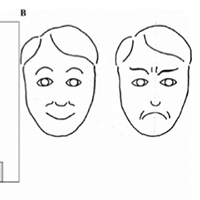Analysis of the role of social support - cognitive psychology and emotional process approach

Accepted: 28 April 2020
HTML: 5
All claims expressed in this article are solely those of the authors and do not necessarily represent those of their affiliated organizations, or those of the publisher, the editors and the reviewers. Any product that may be evaluated in this article or claim that may be made by its manufacturer is not guaranteed or endorsed by the publisher.
Authors
The eyes are extremely important for communication. The muscles around the eyes express emotional states, and the size of the pupil signals whether a person is aroused and alert or bored and fatigued. Pupil size is an overlooked social signal, yet is readily picked up by observers. Observers mirror their pupil sizes in response, which can influence social impressions. Pupil diameter is enhanced in a variety of emotional contexts, including viewing pictures, listening to sounds, and during the threat of shock. This study shows that people associate positive faces with large pupil sizes and negative faces with small pupil sizes. Although workplace social support has been described as a profoundly emotional activity, little is known about the emotional demands faced by employees or how these impacts on their well-being. This study examined relationships between ‘emotional labor,’ burnout (emotional exhaustion, depersonalization, and personal accomplishment), and job satisfaction in a sample of an employee who works in the banking sector or manufacturing sector. Also examined was whether workplace social support moderated any relationships found between emotional labor and strain. The relationship between job experience and emotional labor was also investigated.
How to Cite
PAGEPress has chosen to apply the Creative Commons Attribution NonCommercial 4.0 International License (CC BY-NC 4.0) to all manuscripts to be published.

 https://doi.org/10.4081/ejtm.2020.8975
https://doi.org/10.4081/ejtm.2020.8975



